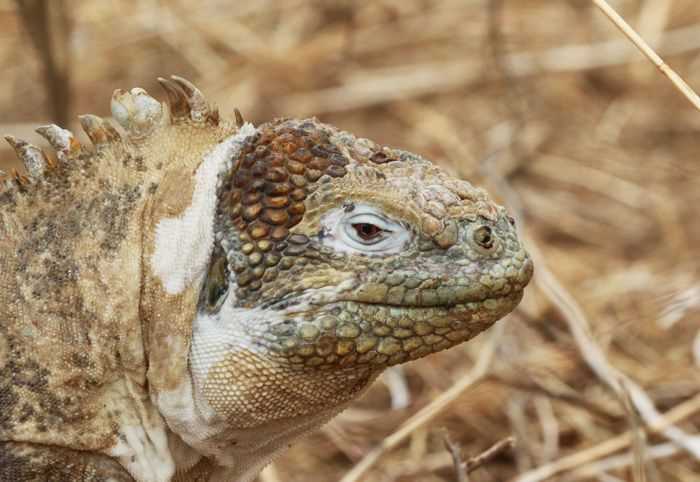To the north of Santa Cruz, we landed at Cerro Dragon and began the day with a hike to see Sally Lightfoot crabs and marine iguanas basking in the sun. Seabirds searched for fish and rested on rocks while waders fed from a lagoon behind the white sand beach.
Gray and leafless trees in the dense Palo Santo forest showed us that the rainy season has not yet arrived. The forest is home to several species of land birds, including finches, mockingbirds, warblers and flycatchers. We finally reached the hill where land iguanas live and nest. These iguanas are unafraid of humans and like to bask in the sun.
As the morning warmed up, we headed aboard to get ready for more action. While snorkeling off Guy Fawkes Island, we were excited by the abundant marine life, including tropical and subtropical fish. We saw sea cucumbers, starfish and sea urchins, and we spotted baby blacktip reef sharks and large whitetip reef sharks from the shoreline. Diving seabirds, parrots and jackdaws added some excitement.
We participated in energetic kayaking and paddleboarding in the afternoon and enjoyed an amazing sunset at night. What a great day exploring with unique animals!







